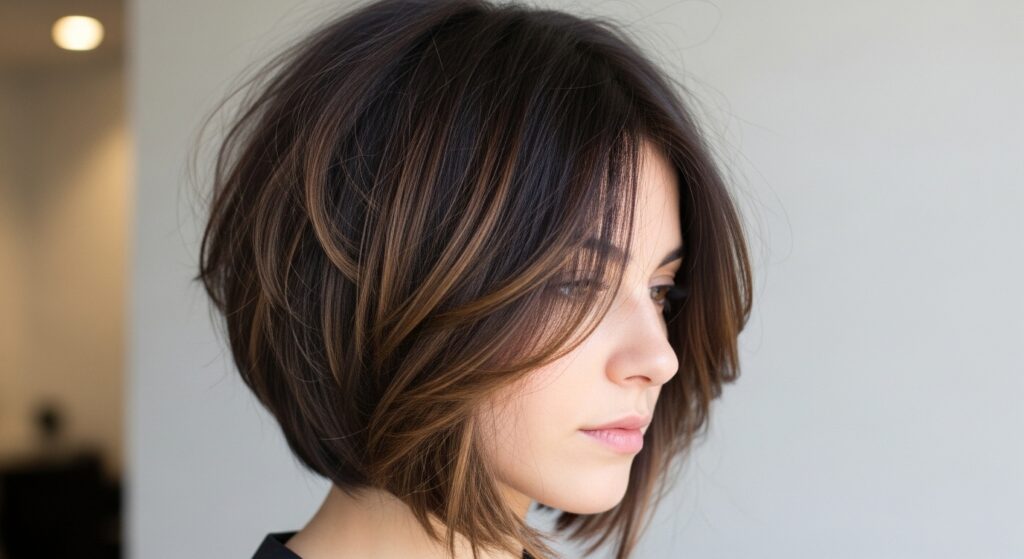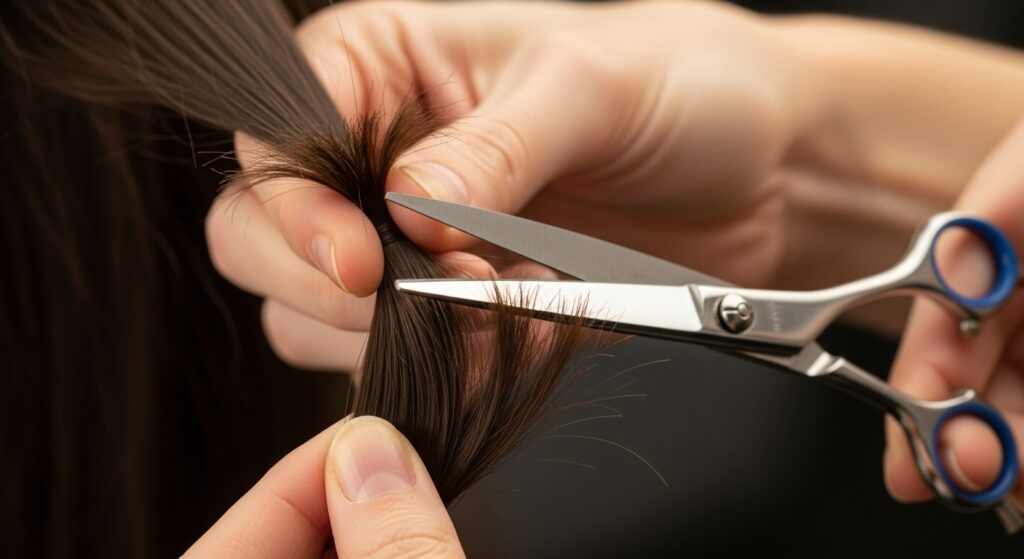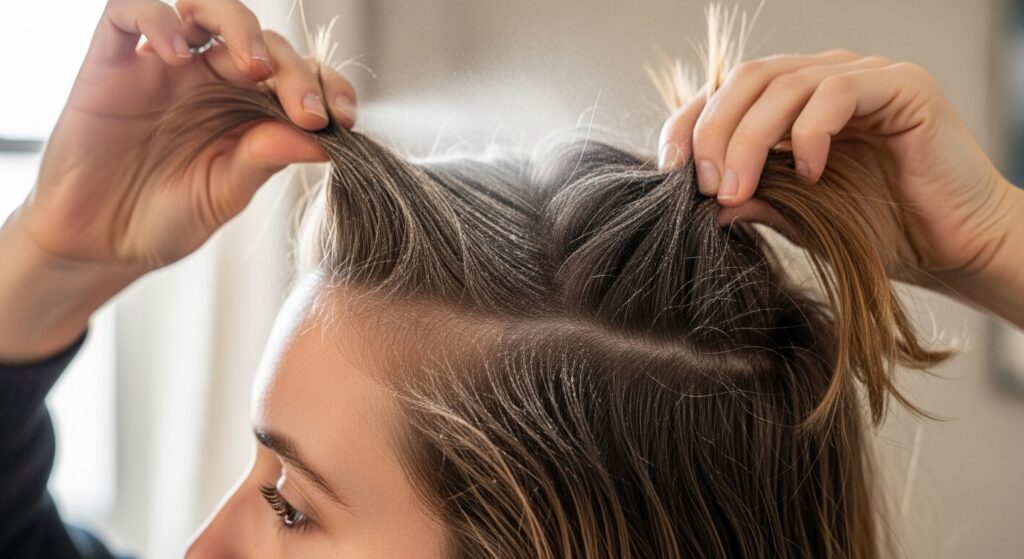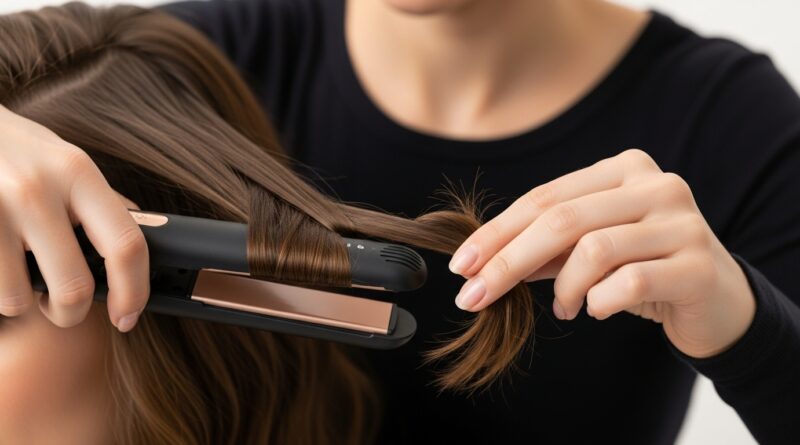How to Perfect choppy bob Hair Without a Trip to the Salon
There’s a reason the choppy bob remains a timeless, edgy haircut. It’s the perfect blend of effortless cool and structured style. But let’s be honest: that “I just woke up like this” texture can sometimes look a little more “I just fought with a hedge” after a few weeks of growth or a bad hair day. The layers can start to feel heavy, the ends can look frayed, and the overall shape can lose its signature defiance.
Before you panic and book an expensive salon appointment, take a deep breath. Perfecting your choppy bob is well within your reach, right from your own bathroom. With the right techniques and a few trusty tools, you can refresh, revive, and restyle your bob to look salon-sharp. This guide will walk you through everything you need to know, from daily styling hacks to maintaining that perfect texture and shape between cuts.
Understanding the Anatomy of Your Choppy Bob
Before you start snipping or styling, it’s crucial to understand what makes a choppy bob work. Unlike a blunt bob, which is all about a clean, solid line, the choppy bob is defined by its texture and movement. This is achieved through:
Uneven Layers: The layers are cut at different lengths to remove weight and create dimension.
Texturized Ends: The ends are point-cut or sliced, rather than cut straight across, to avoid a bulky, helmet-like look.
Internal Texture: Thinning shears or razor cutting are often used within the hair’s interior to create softness and separation.
When your bob starts to look off, it’s usually because the ends have become too uniform, the layers have grown out and lost their definition, or the texture has fallen flat. Our mission is to combat these issues head-on.

Essential Tools for Your At-Home Bob Maintenance Kit
You don’t need a salon’s entire arsenal, but a few key tools are non-negotiable for keeping your choppy bob in check.
Sharp Hairdressing Scissors: Do not, under any circumstances, use craft or kitchen scissors. A pair of sharp, professional hairdressing scissors is essential for clean, precise cuts that don’t damage your ends.
Fine-Tooth Comb: This is your best friend for sectioning and ensuring even, controlled trims.
High-Quality Flat Iron: A 1-inch flat iron is perfect for smoothing, adding bends, and redefining texture.
Volumizing Dry Texture Spray: This is the secret weapon for recreating that lived-in, piecey texture.
Strong-Hold Finishing Spray: A lightweight but firm hairspray will lock your style in place without making it crunchy.
Paddle Brush or Round Brush: Ideal for blow-drying your bob to achieve a smooth base or a bouncy, turned-under look.

The Art of the At-Home Trim: Taming Split Ends
The quickest way for a choppy bob to lose its charm is with split and frayed ends. A minor trim can make a world of difference. Here’s how to do it safely.
Step 1: Start with Clean, Dry Hair. Hair stretches when wet, so you’ll get a more accurate cut on dry hair. This is especially important for textured cuts like a choppy bob.
Step 2: Section Your Hair. Use your fine-tooth comb to create a clean part down the middle. Then, clip the top half of your hair up, leaving the bottom section loose.
Step 3: The “Dusting” Technique. Instead of taking off large chunks, we’re “dusting” the ends. Take a very small, horizontal section of hair from the bottom layer. Twist it slightly. You’ll see the most damaged ends poke out. Carefully snip only these stray, split ends. This preserves your length while removing the damage.
Step 4: Work Your Way Up. Unclip the next section and repeat the dusting process. Always use the previously trimmed section as a guide to maintain balance.
Step 5: Check for Balance. Once you’ve finished, let all your hair down. Look in the mirror and ensure both sides are even. Make any tiny adjustments by taking small vertical sections and point-cutting into the ends to re-create that choppy texture.

Styling Secrets for That “Just Left the Salon” Texture
Styling is where the magic happens. The goal is to enhance the existing choppy layers, not fight them.
1. The Power of the Blow-Dry: After washing, apply a heat protectant and a volumizing mousse to damp hair. Using a paddle brush, blow-dry your hair, focusing on lifting the roots for volume. As you dry the ends, use the brush to turn them under or over for a subtle, varied bend.
2. The Flat Iron Redefinition: This is your most powerful tool. Instead of just straightening, use your flat iron to add intentional bends. Take small, vertical sections. Clamp the iron near the root, and as you glide down, gently twist your wrist inward or outward. Alternate the direction of the twist on different sections. This will break up any uniformity and create beautiful, piecey movement.
3. The Texture Spray Revival: Once your hair is styled, it’s time for the finishing touch. Lightly mist a dry texture spray onto the mid-lengths and ends. Then, gently scrunch your hair with your fingers. For extra definition, you can even gently pinch smaller sections together. This spray adds grit and hold, making the choppy layers stand out.

Reviving a Second (or Third) Day Bob
Your choppy bob can look even better on day two. Here’s how to revive it without a full wash.
Dry Shampoo is Your Base: Spray dry shampoo at the roots to absorb oil and add volume. Let it sit for a minute, then massage it in.
The Strategic Refresh: Use your flat iron on any sections that have gone flat or lost their shape. You don’t need to do your whole head—just the top layer and the face-framing pieces.
Re-activate Your Products: Lightly dampen your hands with water and run them through your hair, then re-scrunch. This can re-activate the texture spray from the previous day. Add a tiny bit more spray if needed.
Create a “Lived-In” Part: For a cool-girl look, shift your part slightly from where it was yesterday. This instantly adds volume and a sense of effortless style.

Mastering the Art of the Accessory
Sometimes, the perfect fix isn’t a cut or a tool, but a clever accessory that distracts and elevates.
Statement Claw Clips: Pull the front sections of your hair back and secure them with a stylish claw clip. This instantly lifts the roots and shows off your choppy layers around your face.
Thin, Decorative Headbands: A thin, fabric or metal headband can tame flyaways and add a chic touch, drawing attention to your haircut’s shape.
Texturizing with Bandanas: Fold a bandana into a thin strip and tie it around your head like a headband. This is a perfect way to style second-day hair and enhance that edgy, textured vibe.

Maintaining Healthy Hair for the Perfect Choppy Bob
A great style starts with healthy hair. To keep your choppy bob looking its best between trims, a solid maintenance routine is key.
Weekly Deep Conditioning: Texturizing techniques can be drying. Combat this with a weekly hydrating hair mask to keep your ends soft and prevent them from looking brittle.
Heat Protectant is Non-Negotiable: Every time you use heat, you must use a protectant spray. This forms a barrier between your hair and the high temperatures, preventing damage and preserving your haircut’s integrity.
Scalp Health: Healthy hair grows from a healthy scalp. A gentle scalp scrub once a week can stimulate blood flow and promote stronger, healthier growth, meaning your style stays fresher for longer.
Conclusion: Your Salon is in Your Bathroom
Mastering your choppy bob at home is all about embracing its texture and learning a few key techniques. From the strategic “dusting” of split ends to the artistic use of a flat iron and texture spray, you have all the power to keep your haircut looking sharp, modern, and perfectly imperfect. Ditch the salon anxiety and embrace the creative process. With a little practice, you’ll not only save time and money, but you’ll also develop a deeper understanding of how to style your hair to suit your unique look every single day.



